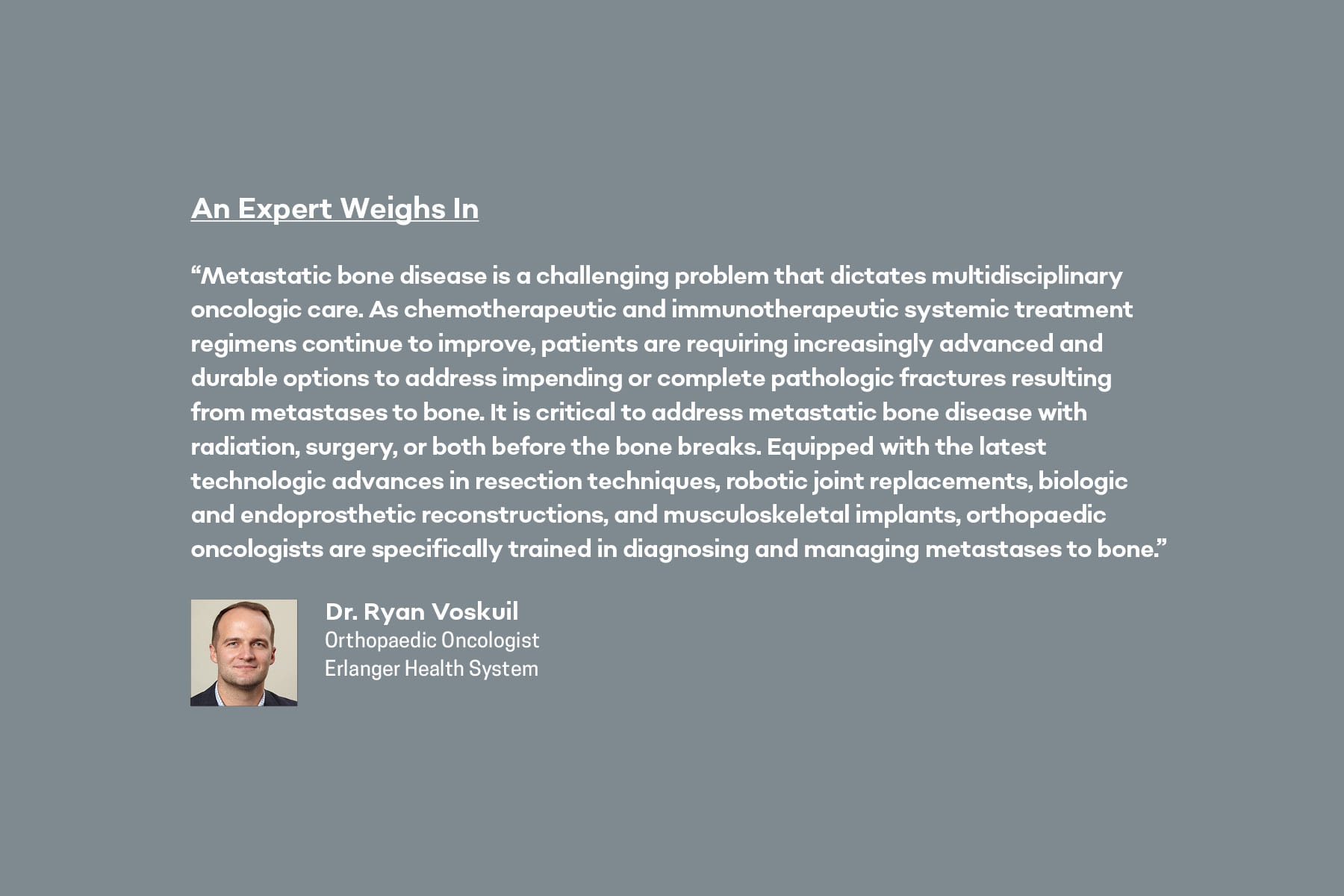Annual Bone & Joint Section
Bones and joints are easily taken for granted, but they’re absolutely vital to our health and day-to-day activities. In the following section, learn how to keep your bones and joints healthy so that you can keep an active lifestyle for many more years to come.
By Anna Hill
The effects of metastatic bone disease can vary widely from case to case. However, there are several different treatment options available to help patients manage their pain and maintain their day-to-day activity levels.
Defining Metastatic Bone Disease
Metastatic bone disease originates from cancer that begins in an organ, then later spreads to bone. Once a patient’s cancer spreads to bone, it can cause pain, as well as damage or weaken the bone, which increases the risk of pathologic fracture. Furthermore, it can make daily activities more difficult, which leads to a decline in quality of life. The bones that most commonly experience metastases include:
- Spine
- Long bones in the leg
- Pelvis
- Ribs
- Skull
- Upper arm
While this condition often causes bone damage, it can cause abnormal growth as well, which can lead to deformities in the bone. Some of the most common symptoms of metastatic bone disease include constant, night-time, and functional pain in the spine, pelvis, or extremities; fractures that occur from minor injuries; and anemia, which results from reduced red blood cell production from weakened bone marrow. Bone metastases can cause pain from the local effect of the cancer eating away the bone, tumor pain, pain from the bone structure being weakened, or functional pain.
Nonsurgical Treatment
Thankfully, there are multiple treatment options for managing metastatic bone disease. Radiation alone is an excellent way to treat tumor-related pain. Radiation treatments kill cancer cells, which can help to reduce pain as well as prevent bones from deteriorating further. Radiation can also be used after surgery to kill remaining cancer cells, but radiation should not be used alone if the bone is at risk of breaking. Another nonsurgical option for treatment is medicine, which can come in the form of chemotherapy, endocrine (or hormone) therapy, or bisphosphonates, the latter of which works by interfering with the cells that cause breakdown of your bones.
Surgical Treatment
When it comes to metastatic bone disease, surgery can be used to treat or prevent broken bones as well as restore skeletal strength, which is important for those who wish to regain the ability to return to some of their normal, daily routines. Broken or weakened bones need to be fixed in position and supported long enough for them to heal or regain their strength. Surgery accomplishes this by stabilizing the bone with devices such as wires, plates, rods, pins, and screws, and bone cement is also occasionally used to provide added strength to the weakened bone. If joints are involved with metastatic bone disease, total joint repair or replacement may also be necessary to restore function.
Outlook
It’s important to keep in mind that treatments for metastatic bone disease are not meant to be curative. However, these treatments can significantly improve someone’s quality of life and help them return to daily routines and activities that destroyed joints, weak bones, or bone pain previously kept them from. Every patient should discuss their options with their oncologist to establish a treatment plan that’s best suited to them. HS


